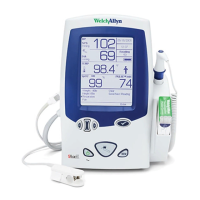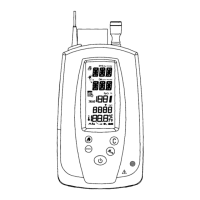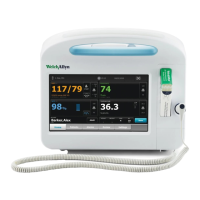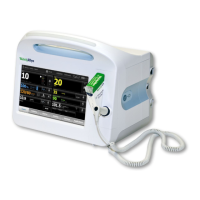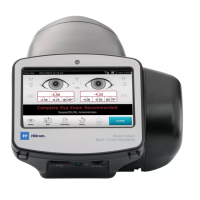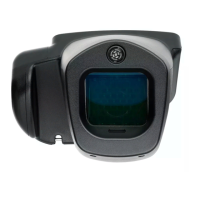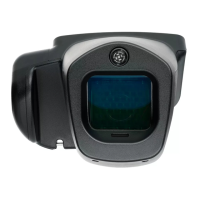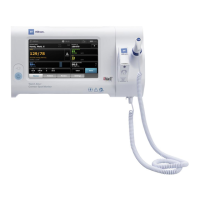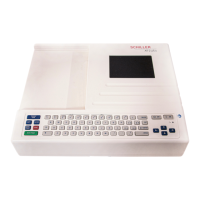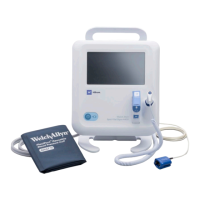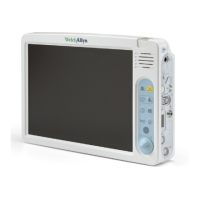74 Repair test specifications Welch Allyn Spot Vital Signs
Pneumatic calibration
Calibrate the Spot Vital Signs with 0 and 250 mmHg applied to the pressure port with the
following algorithm:
Adjust the pressure calibration offset value with the following formula. ((Last auto zero
pressure value + current Unit pressure) ( 16384) / (pressure offset correction value +
pressure gain correction value). The pressure-offset value must be -15384 to 15384.
Verify that Spot Vital Signs successfully performs an auto zero.
Adjust the pressure gain value until the pressure deviation from the applied pressure is
less than 0.1 mmHg. Continue to utilize the following formula until the pressure is less
than 0.1 mmHg. (Applied pressure / Unit pressure) ( pressure gain value. The pressure
gain value must be 1000 to 31767.
When the pressure transducer calibration is performed (only when successful), a
calibration signature (four printable characters) and the calibration date/time is stored in
the Spot Vital Signs memory - any of four printable characters.
Pneumatic accuracy test
Enter the Internal Configuration Mode to perform this test (see “Internal configuration
mode” on page 20).
Perform an Auto-zero before starting this test (“To verify the blood pressure calibration:”,
Step 1 on page 27 through Step 4 on page 27). The Pneumatic Accuracy test is defined as
the comparison of Spot Vital Signs pressure measurement and applied pressure at 0, 50,
150, and 250 mmHg. The specification for each reading is within ±3 mmHg of the target
pressure except for the 0 mmHg reading which is within ±1.0 mmHg.
Valve control test
Connect a 100 cc cylinder to the Spot Vital Signs pressure port and pressurize to 160
mmHg. Give Spot Vital Signs the commands to open the valve for 10 mmHg/s, 15 mmHg/
s, and 25 mmHg/s. Record each pressure drop: 4 to 12 mmHg, 4 to 15 mmHg, and 4 to
25mmHg, respectively.
Voltage calibration
Calibrate the Spot Vital Signs battery voltage measurement circuit at 5.5 Vdc (+0.1/-0.0
Vdc). Verify the battery calibration factor is 14,384 to 18,384. (?)
After performing a successful battery measurement circuit calibration, Spot Vital Signs
memory will store a calibration signature of up to four printable characters.
Blank mode current test
The Blank Mode Current Test is defined as the amount of current drawn through the
battery terminals. All LCD segments, the back light, and the SpO
2
mode are all turned off.
The limit is 200 mA maximum.
Note
Do not calibrate the Spot Vital signs if the internal temperature is greater than
89.9° F (32° C).

